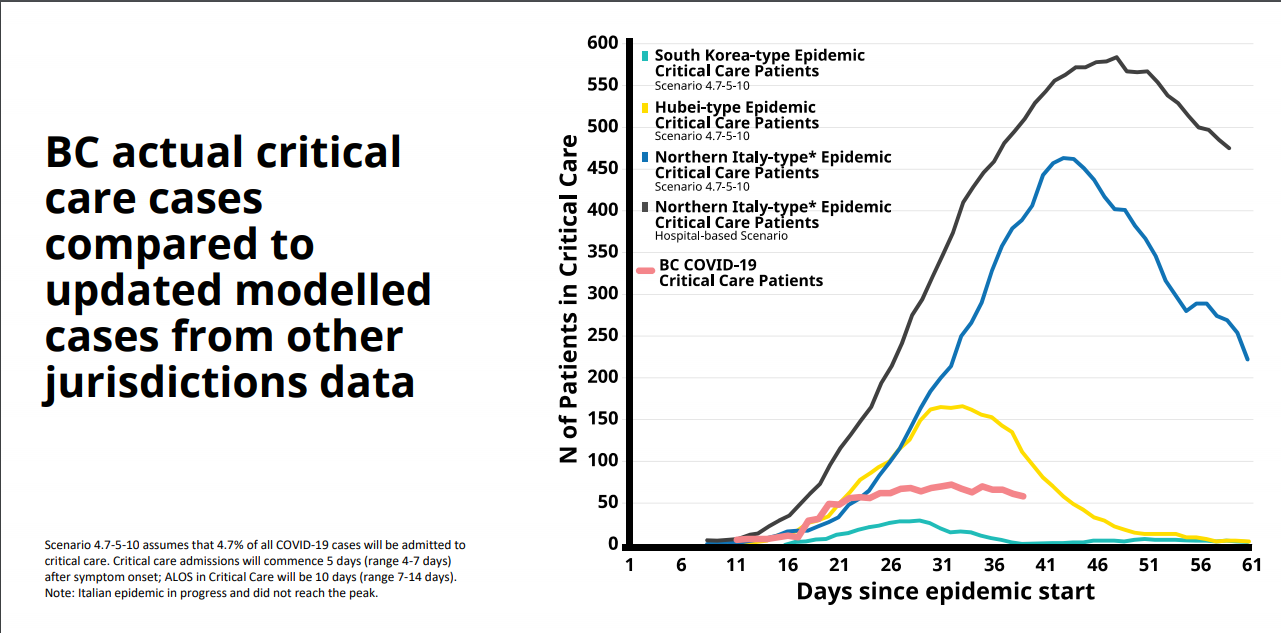Success! BC measures are flattening curve, continued vigilance required for 'new normal'
British Columbians are succeeding in ‘flattening the curve’, but need to remain 100-per-cent all-in, in regard to virus transmission, according to Friday morning’s press conference with Adrian Dix, Minister of Health, and Dr. Bonnie Henry, B.C.’s provincial health officer.
Both also stressed that residents need to adapt to a ‘new normal’ if we want avoid a dramatic resurgence of COVID-19 in the province.
““We are not going back to where we were in December. Our new normal is going to be a modification of what we are seeing right now,” said Henry, explaining events like conferences won’t be happening at all this year, but perhaps restrictions could be eased on things like business travel, “but we’re not there yet.”
“This slowdown is due to public health action, not herd immunity – and what happens next will also be due to public health action,” Henry added.
Dix echoed her call to vigilance.
“There’s a lot of hope, here. And a lot of fear,” he said. “We must find a healthy new normal as we move forward through the next 12 to 18 months.”
He said health officials are very aware of the potential negative health benefits of continued restrictions, and have an enormous challenge ahead in determining which restrictions to keep and which to ease in the months ahead.
“This will be a difficult process that (will require) creativity, imagination, care and adaptation,” he said. “Whatever actions we take, we know there’s a significant human cost if we get it wrong.”
What exactly this new normal will look like isn’t clear at this stage.
“(This) is without precedent in our lifetime,” he said.
Dix also thanked British Columbians for their efforts.
“I am profoundly grateful for everything you’ve done,” he said.
The modelling report unveiled in the press conference showed that B.C.’s epidemic curve has been well below projections based on the Italy and Hubei experience, and that B.C.’s COVID-19 cases have plateaued and started to decline.
As a result, officials are encouraging ‘cautious optimism’, saying in the report, “This difference between what could have been and what has happened is because of the collective action of BC citizens.”
The report said, “B.C. epidemiologists are building two types of models to better understand the future potential direction of the epidemic: Forecasting models predict new cases in the short-term assuming no change in our current public health measures, and dynamic models use simulations to understand what would happen if conditions changed – for example, how case counts might change under different levels of physical distancing.
“These models will be a tool to support policy makers and health system planners in making informed decisions about potential next steps.”
It said the collective goal is to, “control transmission and growth in new cases while monitoring and minimizing unintended consequences of necessary public health measures.”
























